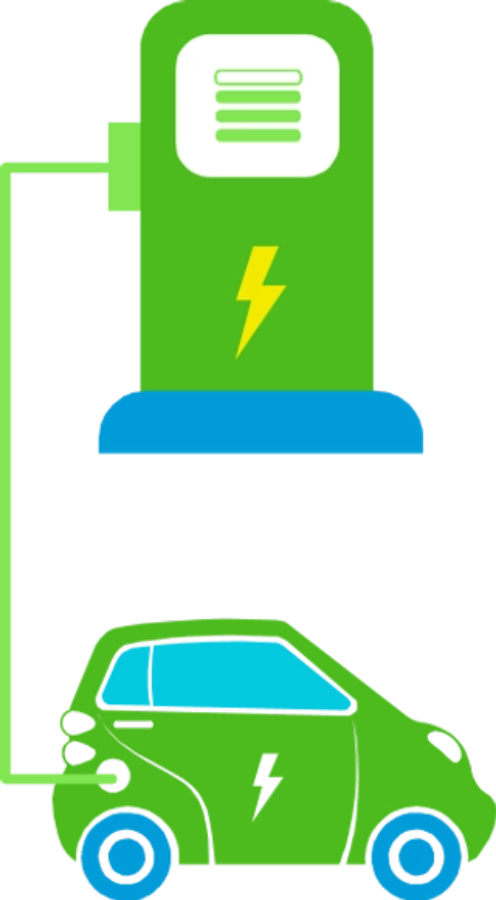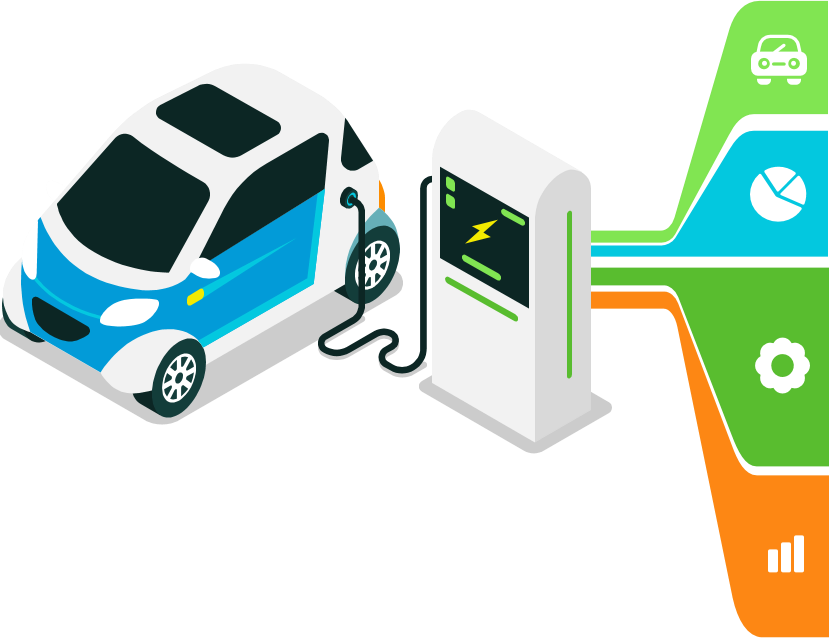What's at Stake?
Select one to read more:
The standard of global transportation is changing.
Internal combustion engine (ICE) vehicles have been a staple of our world for over a century, but the consequences of this industrial age technology are coming into sharp relief in the 21st century. Health concerns, pollution, and global climate change are among the currently tangible side effects of the ICE automobile, and the world is shifting to compensate. With this shift, the home of the Motor City finds itself in on the edge of the spotlight. Will Michigan have the vision to lead the way, leaning on its existing infrastructure, technical expertise, supply chains, and reputation? Or will we cling to the past, and let the automotive capital of the United States lose its century long head start?

Savings
Savings at the pump… er, outlet!
For families, corporations, or governments, electric vehicles are simply cheaper per mile than their Internal Combustion Engine (ICE) counterparts.
This can be illustrated with the term “Miles per Gallon Equivalent”. Here’s how it’s done:
Miles per Gallon Equivalent = (Vehicle’s miles per kilowatt hour x dollars per gallon) / dollars per kilowatt hour
Example:
An EV gets 5 miles per kWh of energy in the battery.
Gasoline currently costs $4.00/gallon.
Electricity costs $0.15/kWh.
(5 x 4.00) / 0.15 = 133 MPGe
Since an ICE vehicle gets an average of 25 MPG, it costs 1/5 as much in this scenario to drive an EV! Additionally, EVs require less routine maintenance, such as oil changes.
The average Michigander drives 14,000 miles, spending roughly $2,240 on fuel each year. Driving an EV would mean spending only $450 annually! What would you do with a $1,800 after-tax bonus?


Health
Internal Combustion Engine (ICE) powered vehicles create many health risks. Just a couple are...
Health
Internal Combustion Engine (ICE) powered vehicles create many health risks. Just a couple are...
Gasoline Station Tank Leaks/Runoff
Oil spills from leaking underground storage tanks at homes and gas stations are the single largest threat to groundwater quality in the U.S. today. Many of the chemicals in the leaking fuel/oil are known carcinogens.
Air Pollution
Increased exposures to PM10 and PM2.5 are proportionally related to increases in chronic lung conditions, lung cancer, and all-cause cardiovascular diseases and events. Oxidative stress, inflammation, and damage to tissues and cells are also increased.
Noise Pollution
Linked to cardiovascular disease, increased mental illness, sleep disturbance, and poor work performance.
Internal Vehicle Air Pollution
Pollutants inside the vehicle are often much higher than outside due to air recirculation. At traffic signals, pollutant levels can be 29x higher than on open roads. In heavy traffic, they can be up to 40x higher than when the car is moving.

MI Economy
Michiganders are buying more EVs
Kelly Blue Book reports EV sales in Q2 2021 were up 255% year-over-year. Shouldn't these sales be led by Michigan companies?
Manufacturing Jobs
The #1 sector of manufacturing in MI is still motor vehicles and parts. The next 7 sectors added up still fall short of auto manufacturing. Maintaining a modern auto industry is critical for the health of Michigan's economy.
Michigan's Automotive Leadership
Michigan needs to be a leader in the EV sector to ensure Michigan's economy doesn't falter and that we are at the forefront of automotive technology and trends. Manufacturing EV powertrains uses about 60% fewer components than ICE vehicles.
Michigan's Reputation
We are the state of the Motor City. We must maintain our status, and LEAD our country in the automotive industry.

Global Market
Comparing Q1 2021 to Q1 2021
Electric Vehicle (EV) production is up 1%. This is negligible growth compared to other countries.
USA
EV production is up 80%, hybrid vehicles are up 184%.
Europe
Data by auto company:
BYD is up 98%
NIO is up 423%
Xpeng is up 384%
China
Global EV sales went from 0.72 million to 4.79 million. There is an enormous global market that is slipping through the fingers of Michigander's.

Environment
Scientists across the globe verify that the burning of fossil fuels is leading to increases in global temperatures year over year, causing climate change and a plethora of cascading negative impacts.
Local Pollution
Internal Combusion Engine (ICE) vehicles can emit sulfur dioxide, nitrogen dioxide, and other pollutant compounds that cause acidic or toxic water. These can be harmful at a local and/or global level to plants, animals, and humans. Electric Vehicles (EVs) emit no local pollution, and potentially no pollution if powered by a sustainable energy source.
Recycled Batteries
Research is being done on recycling lithium-ion batteries. MIT research has found that a used Li-ion battery can still be used for another decade or more once it has completed its useful life in automotive.
Greenhouse Gas Emissions
The entire lifecycle GHG emissions from EVs (including manufacturing, transportation, and disposal) is ~25% less than that of an Internal Combustion Engine (ICE) vehicle.
Noise
EVs are much quieter than ICE vehicles, decreasing noise pollution.
